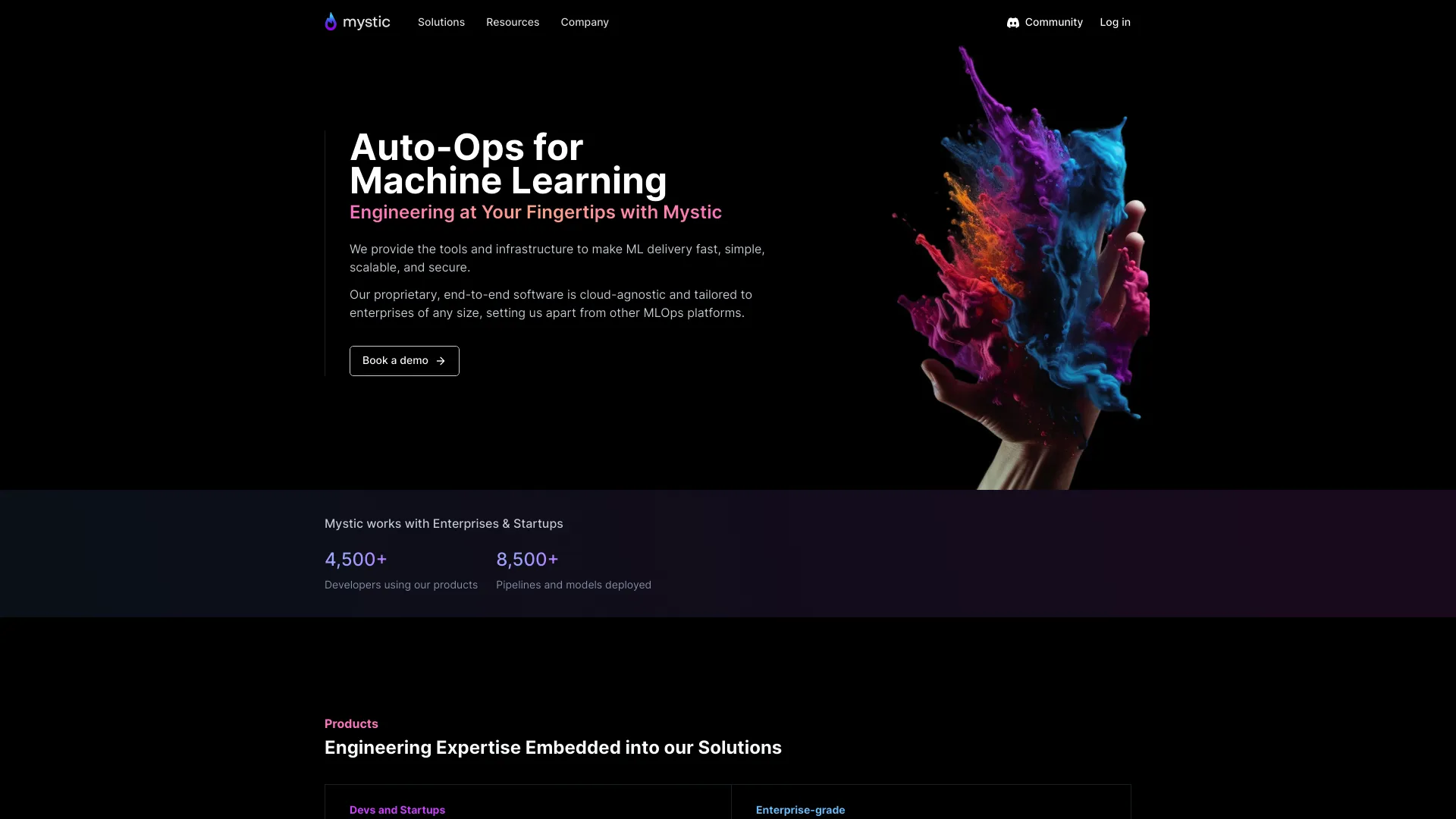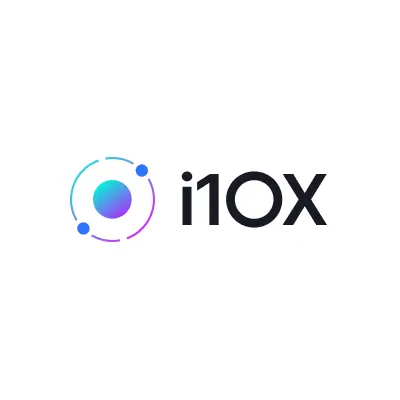AI Mlops Platform

What Happened to MysticAI? The Rise and Fall (and Pivot) of an Ambitious AI Infrastructure Startup
Ever wonder how a promising AI startup—backed by Y Combinator and targeting an exploding market—could vanish so quietly? That’s the story of MysticAI.
Once heralded as a cutting-edge platform to simplify machine learning deployment, MysticAI seemed like it had all the right ingredients: powerful tech, backing from elite accelerators, and a solid use case in AI infrastructure. And yet, by early 2025, its original offering had effectively disappeared.
So, what happened? Why did MysticAI fail? And even more curiously, why has it suddenly reemerged as a tool to generate t-shirt designs?
Let’s unpack the story.
What Was MysticAI?
MysticAI was a UK-based startup, part of Y Combinator’s Winter 2021 cohort, designed to help data scientists and ML engineers easily deploy, run, and scale machine learning models. The company’s flagship product offered serverless GPU inference, high-throughput model endpoints, and simple interfaces that supported a developer-friendly setup.
In essence, MysticAI wanted to be the AWS Lambda for AI—allowing users to run machine learning models in the cloud without managing infrastructure.
Some of their key offerings included:
- Serverless GPU and CPU inference endpoints
- Simple integration with existing cloud accounts
- Support for real-time and batch inference workloads
- Scaling using managed APIs and abstracted architecture
It was a clever value proposition—one that struck a chord in the fast-growing MLOps (Machine Learning Operations) market.
MysticAI aimed to position itself between heavyweight cloud providers and the fragmented world of open-source ML tooling. But unfortunately, where it found opportunity, it also ran headfirst into some very tough terrain.
Why Did MysticAI Fail?
Short Answer:
MysticAI shut down its original platform due to financial constraints, unscalable operations, and fierce competition from bigger cloud infrastructure providers like AWS and Azure.
Long Answer:
Several overlapping challenges led to the downfall of MysticAI. Here’s a breakdown of the primary reasons it failed:
1. Market Fit and Technical Limitations
MysticAI offered powerful tools—but they weren’t accessible or efficient enough for their audience.
- Users complained about long cold starts (up to 10 minutes), making it unsuitable for real-time workloads.
- The platform also suffered from inconsistent performance and downtimes.
- Feedback from developers on platforms like Reddit often cited mystic.ai as being over-engineered but under-delivering.
For a tool meant to “simplify” deployment, many users found it too technical, too slow, or just not cost-effective.
2. Monetization and Pricing Model Issues
In the face of costly GPU resources, MysticAI adopted a pricing model that alienated smaller users.
- Reports indicated that low-volume users faced a 10x price multiplier.
- Some API functions came with hidden pricing—up to $1,000 per month just for scalable architectures.
- Cold starts, delayed inference, and limited cost transparency made it a tough sell for the StableDiffusion community and indie devs.
MysticAI was caught between needing enterprise revenue and courting hobbyist users—failing to serve either well.
3. Hyper-Competitive AI Infrastructure Landscape
Startups in AI infrastructure are under constant pressure from tech giants.
- AWS, Azure, and Google Cloud dominate the GPU-as-a-Service market.
- These providers had better access to NVIDIA hardware and long-standing VC partnerships.
- Other AI-infra startups with deeper pockets and better connections were fighting for the same customers.
In Reddit discussions, users referred to this phenomenon as a “race to the bottom”—where only the most efficient, capital-rich infrastructure platforms could survive. MysticAI simply couldn’t keep up.
4. Burn Rate & Fundraising Woes
Startups usually fail for the oldest reason in the book: they run out of money.
- MysticAI reportedly had a high burn rate—investing heavily in infrastructure, server overhead, and engineering.
- The AI startup hype bubble deflated in 2023–2024, and VCs became hesitant to fund high-cost, low-margin infrastructure plays.
- Without a sustainable business model or long-term users, MysticAI failed to secure a new injection of capital.
When the money dried up, so did the platform.
5. Internal Strategy Shift / Leadership Decisions
While not much is known about internal shakeups, it’s clear that the team made a deliberate pivot.
The original mystic.ai service vanished around late 2024. By early 2025, a new website launched—MysticPOD—branded under “Mystic Ai, Inc.” This new offering completely departed from enterprise infrastructure and instead targeted print-on-demand creators.
This suggests a radical rethinking of MysticAI’s direction, most likely driven by depleted funds, a saturated infrastructure space, and perhaps internal realization that their strengths were better applied elsewhere.
So, What Is MysticPOD?
MysticPOD is an AI tool designed for creating print-on-demand graphics—think AI-generated t-shirt and mug designs, optimized for online merch stores.
Unlike their former B2B platform for ML developers, MysticPOD is a B2C, affordability-driven product for creative entrepreneurs. It offers:
- A one-time lifetime license (as of this writing: $67)
- Unlimited image exports
- Royalty-free commercial usage
- No recurring subscription model
It’s a complete strategic pivot into a different audience with vastly different operating costs—no serverless APIs, no real-time inference systems, and minimal ongoing GPU overhead.
In other words: Mystic.ai didn’t just shut down. It completely reinvented itself.
How Did Competitors Succeed Where MysticAI Failed?
To understand MysticAI’s fall, it helps to compare it to someone who’s still standing.
Take Modal Labs, a direct competitor offering simpler, scalable AI deployments. Modal managed to succeed due to:
- A dead-simple UX for code-to-deployment workflows
- Transparent, usage-based pricing
- Clear communication with technical communities
- Early and strong backing to sustain infrastructure growth
Where MysticAI tried to cover too much—from CPU endpoints to hybrid cloud support—others focused on more directed niches and did so with ruthless execution.
AWS and Azure, of course, dominate the high-performance GPU cloud with scale advantages MysticAI never had. Even smaller players thrived by focusing on unique features or partnerships—which MysticAI struggled to develop.
Final Thoughts: Lessons from MysticAI's Quiet Exit
MysticAI’s story is a case study in how promising tech isn’t enough to win in startup world. AI infrastructure is brutally expensive, and unless you're offering...
- A superior product,
- At a lower cost,
- With seamless reliability...
… you're not going to compete with Amazon.
Their pivot to MysticPOD, while surprising, may represent a smarter, leaner operational model. Gone are the massive GPU bills and multimillion-dollar server costs. In their place: AI art generation, consumer-friendly design tools, and mainstream creative markets.
Time will tell whether this pivot pays off. But one thing’s clear—the infrastructure race MysticAI started in didn’t end in their favor.
FAQs About MysticAI
Who founded MysticAI?
MysticAI was founded by a team based in the UK and participated in Y Combinator’s Winter 2021 batch. Specific founder names were not disclosed in public-facing materials.
When did MysticAI launch?
The company launched its platform in early 2021 as part of the Y Combinator ecosystem.
When did MysticAI shut down?
Mystic.ai’s core platform appears to have shut down quietly in late 2024, with the site going offline by early 2025.
How much funding did MysticAI raise?
Exact figures aren’t publicly available, but the company was venture-backed and a member of Y Combinator, with several early funding rounds to support infrastructure development.
Why did MysticAI fail?
MysticAI failed due to a mix of financial issues, intense competition from cloud giants, operational challenges, and an inability to monetize its services sustainably.
What is MysticPOD?
MysticPOD is the new venture by Mystic Ai, Inc., offering AI-generated print-on-demand design tools aimed at small business owners and digital creators.
MysticAI's journey may be a cautionary tale—but their pivot also offers a surprising lesson in resilience: when one AI model crashes, another might just start printing t-shirts.
What is mystic.ai?
Mystic.ai is a platform simplifying the deployment and scaling of machine learning models. Offering serverless deployment on a shared cluster with pay-per-second pricing starting from $0.1/h, it manages tasks like scaling, caching, GPU sharing, and spot instance management. Additionally, it provides an enterprise solution for running AI models within users' own infrastructure, leveraging serverless GPU inference. With access to a variety of community-built ML models, Mystic.ai serves as an accessible gateway to AI for users at all levels of expertise.
What kind of models can I deploy on Mystic.ai?
Mystic.ai simplifies the deployment and scalability of machine learning models. Users can choose from various deployment options:
Serverless Deployment: Models can be run on Mystic.ai's shared cluster, with payment based on inference time (starting from $0.1/h). This option is ideal for quick setup and effortless scaling without the need to manage infrastructure.
Enterprise Solution (Bring Your Own Cloud - BYOC): For those preferring to utilize their own infrastructure, Mystic.ai offers an enterprise solution. Users can deploy AI models as APIs within their chosen cloud or infrastructure. This option harnesses serverless GPU inference for ML models, ensuring seamless deployment and scaling on advanced NVIDIA GPUs while providing maximum privacy and control over scaling.
Recommended Models: Mystic.ai suggests several models for specific tasks. Collaborative Filtering or Matrix Factorization models are suitable for recommending items based on user behavior and historical data. For Speech Recognition, DeepSpeech or Listen, Attend, and Spell (LAS) models are recommended.
How much does mystic.ai cost?
Mystic.ai presents two distinct pricing models:
Serverless Deployment: Users are charged solely for the inference time without incurring additional costs such as account fees, egress fees, or storage fees. The pricing details for serverless GPU options are as follows:
- Nvidia A100 (40GB): $0.000833/s or $3/h.
- Nvidia A100 (80GB): $0.001111/s or $4/h.
- Nvidia T4 (16GB): $0.000111/s or $0.4/h.
- Nvidia L4 (24GB): $0.000208/s or $0.75/h.
- GPU Fractionization options include:
- Nvidia A100 (5GB): $0.000119/s or $0.429/h.
- Nvidia A100 (10GB): $0.000278/s or $1/h.
- Nvidia A100 (20GB): $0.000417/s or $1.5/h.
Additionally, users can commence their usage with $20 free credits, and no credit card information is required.Bring Your Own Cloud (BYOC): Users can opt for a flat monthly fee to utilize their cloud compute credits in conjunction with Mystic.ai's software. This model offers independence from scaling considerations and provides control over scaling responsiveness, enabling users to scale down to zero. Notably, no prior DevOps or Kubernetes experience is necessary, and users can deploy the latest models from the explore page with just one click. Moreover, Mystic.ai offers a money-back guarantee within the initial 30 days if users are dissatisfied with the BYOC service.
What are the benefits of mystic.ai?
Mystic.ai offers numerous advantages for deploying and scaling machine learning models:
Serverless Deployment: Users can run models on Mystic.ai's shared cluster, paying solely for inference time. This approach is cost-effective and hassle-free, making it ideal for swift deployment without infrastructure concerns.
Enterprise Solution (BYOC): With this option, users deploy AI models as APIs within their own cloud or infrastructure, utilizing serverless GPU inference for ML models. This facilitates effortless deployment and scaling on advanced NVIDIA GPUs while ensuring maximum privacy and control over scaling.
Community-Built Models: Mystic.ai enables users to explore and utilize a diverse range of community-built ML models. This feature not only expands model options but also helps users become familiar with the deployment platform and its functionalities.
In conclusion, Mystic.ai streamlines model deployment, whether users opt for Mystic.ai's cloud or their own infrastructure.
What are the limitations of mystic.ai?
While Mystic.ai offers several advantages for deploying and scaling machine learning models, it's essential to consider some limitations:
Technical Limitations:
- Interpretability: Understanding the decision-making process of AI models can be challenging due to their complexity. Mystic.ai may encounter difficulties in providing clear explanations for its algorithmic choices.
- Data Availability: The effectiveness of AI models heavily relies on the availability of high-quality data. Limited access to relevant data can hinder the performance of deployed models.
Practical Limitations:
- Cloud Dependency: Despite providing serverless deployment, Mystic.ai relies on cloud infrastructure. Users may face constraints if they intend to deploy models outside the ecosystem of specific cloud providers.
- Resource Constraints: Deploying large-scale models with significant computational requirements may be restricted by available resources and associated costs.
- Evolution of Techniques: The field of AI is continuously evolving, with new techniques emerging regularly. Mystic.ai must stay abreast of these advancements to remain competitive and relevant.
Despite these limitations, Mystic.ai streamlines model deployment and offers unique features such as serverless GPU inference, enhancing accessibility and efficiency in deploying machine learning models.
How does MysticAI optimize AI model deployment costs?
MysticAI optimizes AI model deployment costs by allowing models to run on spot instances and enabling GPU fractionalization. This means that multiple models can operate on a single GPU, such as A30, A100, or H100, without any code alterations. Moreover, MysticAI's auto-scaler can reduce GPU usage to zero if models stop receiving requests, thus conserving resources. Users can also leverage their existing cloud credits and agreements to offset costs while using MysticAI.
What are the deployment options available with MysticAI?
MysticAI offers two main deployment options: deploying in your own cloud (Azure/AWS/GCP) or using MysticAI's shared GPU cluster. Deploying in your own cloud allows for full scalability and cost efficiency, with all MysticAI features integrated. The shared cloud deployment provides a low-cost option, although performance may vary based on real-time GPU availability. Both options ensure fast inference and low cold-start times through advanced techniques like custom container registries built in Rust.
How does MysticAI ensure high performance in AI model deployment?
MysticAI ensures high performance in AI model deployment by utilizing advanced inference engines like vLLM, TensorRT, and TGI. The platform's scheduler quickly determines the optimal queuing, routing, and scaling strategy within milliseconds. MysticAI's custom container registry, written in Rust, offers significantly lower cold-starts, enabling fast loading of AI models. The platform’s fully managed Kubernetes environment and comprehensive API, CLI, and Python SDK simplify the deployment process, ensuring seamless and efficient AI inference.





























